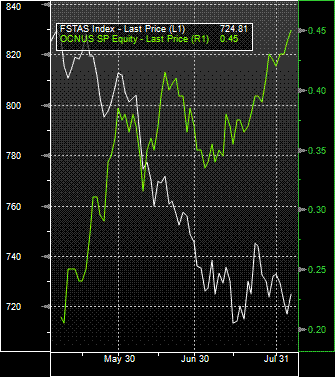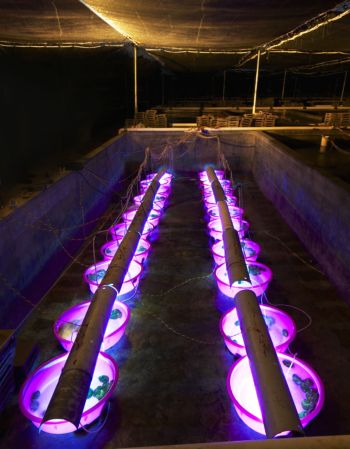
OCEANUS touched broker price target of 45.5 cents in yesterday’s intra-day trade just two weeks after Kim Eng Securities’ buy call was issued with a 15% upside on 23 Jul.
According to analysts, the stock has a good expansion plan, but risks include cashflow and capital expenditure requirements to grow its abalone population.
A second risk is diseases that may affect all their livestock, especially in the absence of insurance.
Since its RTO placement price of 20 cents on 2 May 2008, trading volume of this Catalist stock has consistently been one of the hottest on the local bourse.
After resuming trade on 7 May to close at 21 cents, Oceanus’ stock price more than doubled in a short 3 months to reach a historic high of 44 cents.
Meanwhile, the FTSE ST All Shares index shed more than 10%.
Doubling market share and integrating downstream
”Abalone is a rare and expensive shellfish enjoyed by the rich, but Oceanus is changing the old rules with plans to make this delicacy affordable to the middle class,” said its executive chairman, Dr Ng Cher Yew, when its 1H08 results were announced.
The aquaculture farm is addressing the shortage of 8,000 tons of abalone (one third of global demand, according to Fishtech estimates) with plans to more than triple capacity by 2009.
This will increase its global market share to 16% (from 6% currently), according to estimates by Daiwa Securities.
A revenue surge for its latest set of financial results point to the abalone business’ potential. 1H08 revenue was up 267% y-o-y at Rmb 223 million.
During the first half, the market value of the farm’s abalone grew by Rmb 70.5 million as its population increased from 107 million as at 31 December 2007 to 165 million as at 30 June 2008.
Goodwill of Rmb 150 million, a once-off non-cash item, was written off because the company listed through a reverse takeover of TR Networks. Profit before tax, which would otherwise have been Rmb 180.4 million, fell to Rmb 30.4 million as a result. Accordingly, profit before tax margins would have been 81% instead of 13.7% if not for goodwill written off.
Oceanus is currently in talks to start a joint venture that makes braised abalone affordable to China’s vast middle class population. The JV will use the brand and culinary recipe of a restaurant highly reputed for its braised abalone cuisine.
”Downstream integration to our existing business of breeding and selling live abalone will make Oceanus even more lucrative than before,” said Dr Ng.

Actual aquaculture sales were Rmb 181.5 million, up 349%.
The phenomenal jump in sales was largely due to two factors: firstly, shifting core business from fish aquaculture to the breeding of premium abalone, which is a more lucrative product.
Secondly, a massive algae bloom that plagued China’s coastlines since May this year had caused a price hike in abalone prices.
The excessive algae growth choked other aquatic life, depleting supplies of abalone farmed in the sea.
Oceanus’ abalone, being reared in cement tanks onshore, enjoyed higher prices and greater sales volume during 1H08 because of the supply shortage.
This led to exceptionally large numbers of its abalones in the 2.5 to 3-year age group being sold as these were fetching far better prices than expected. During this period, abalone in this category sold for Rmb 140-150 per kati (500 gm), compared to Rmb 120 in the past.
However, 2H08 sales growth will likely slow down, as the farm needs to breed its 2.5 to 3 year-old abalones to larger sizes.
Oceanus’ strategy is to maintain various age groups of abalones in a manner that optimizes profitability and balances the age profile of its biological asset base.
Related story: OCEANUS: Daiwa's target price is 53.5 cents





